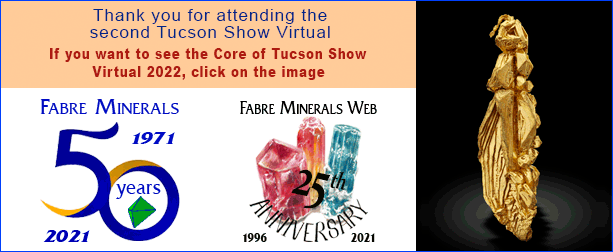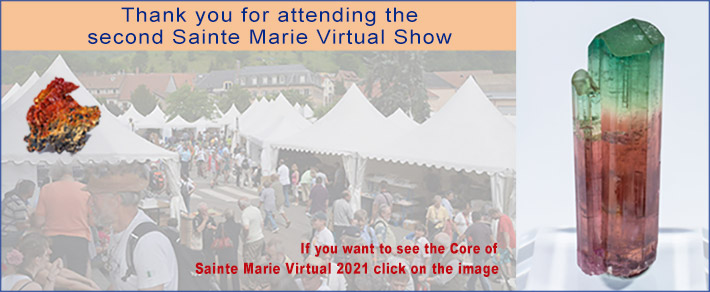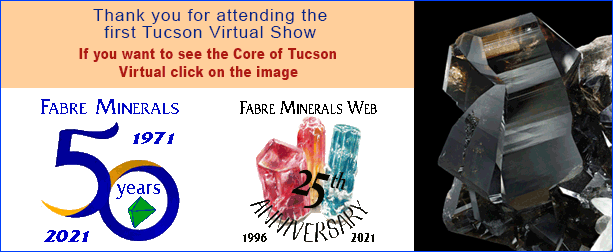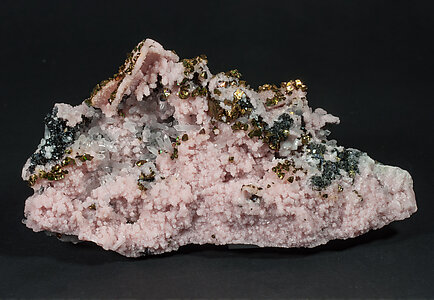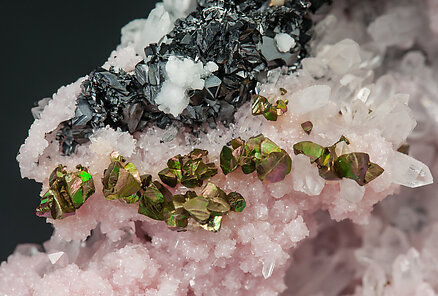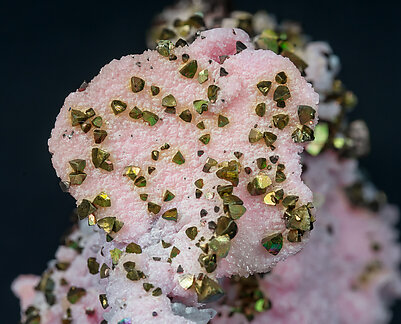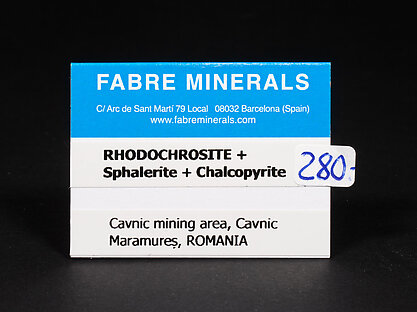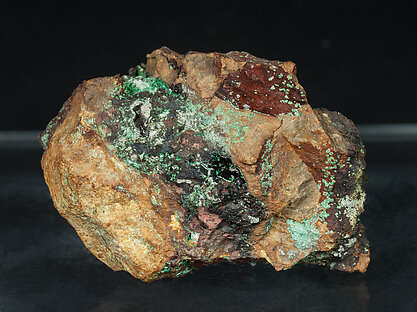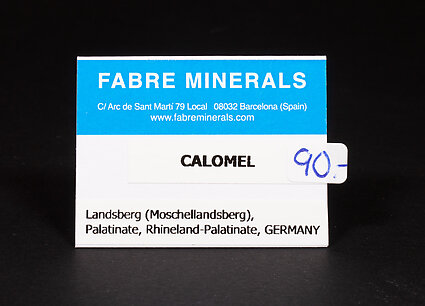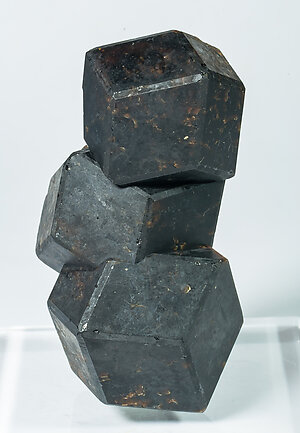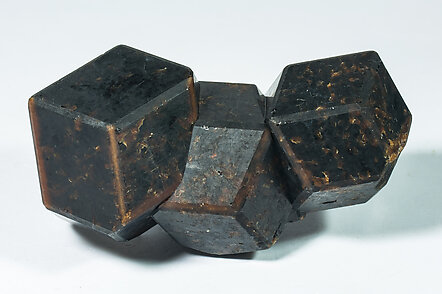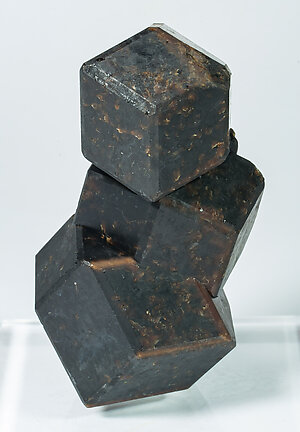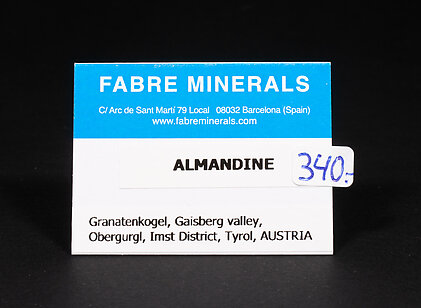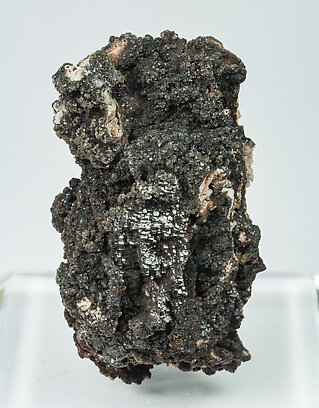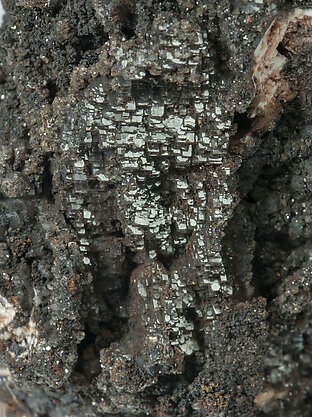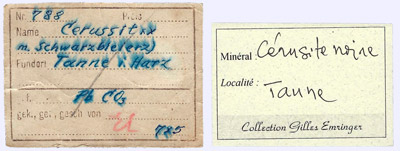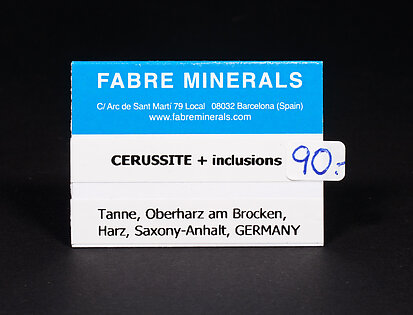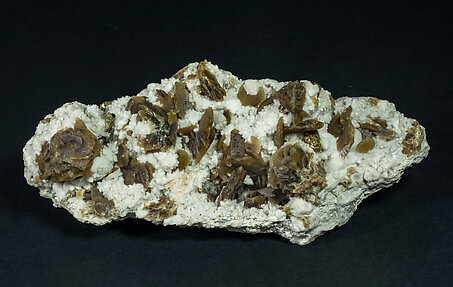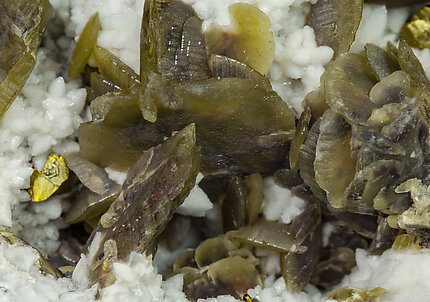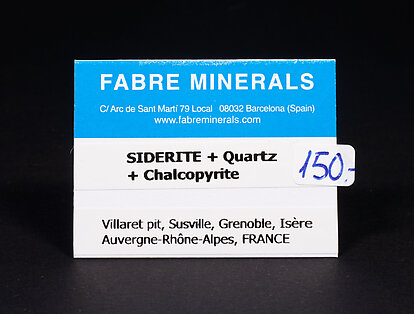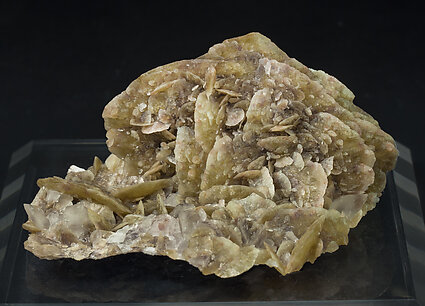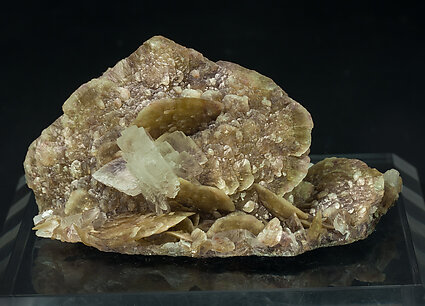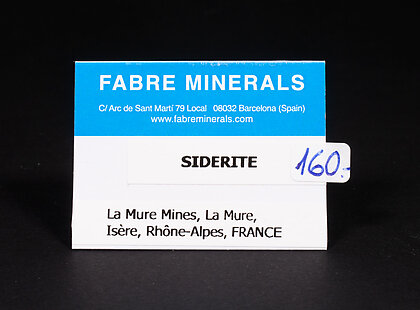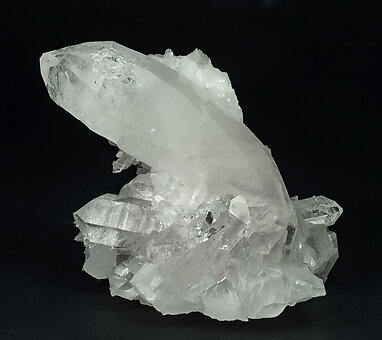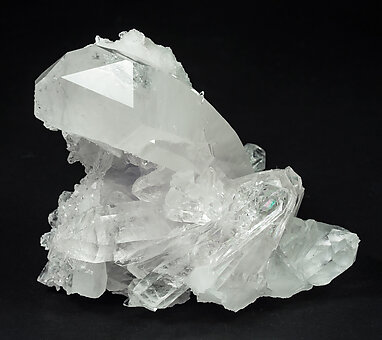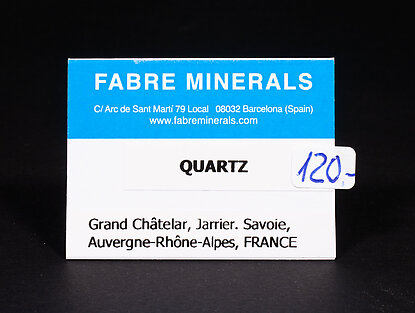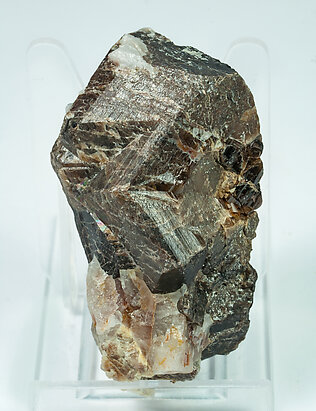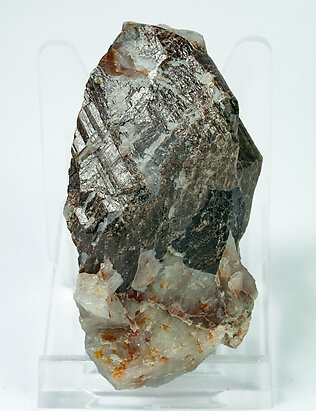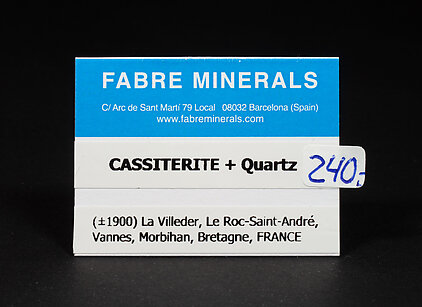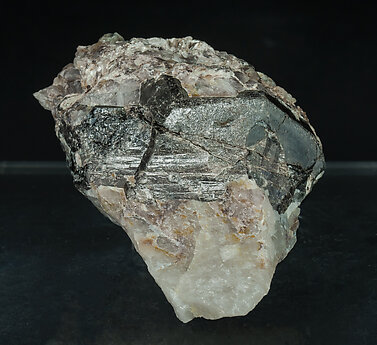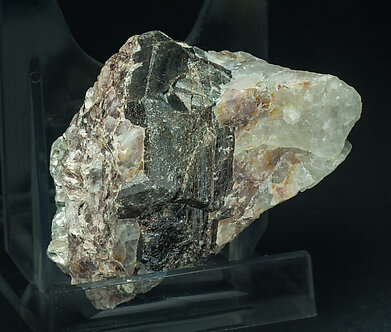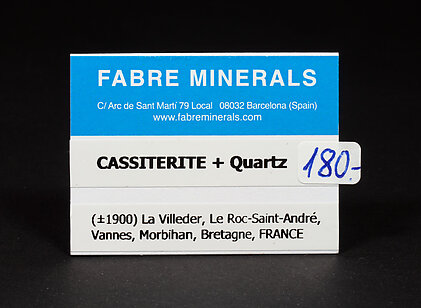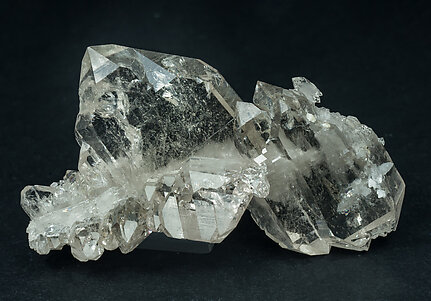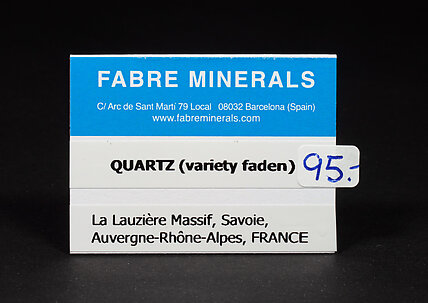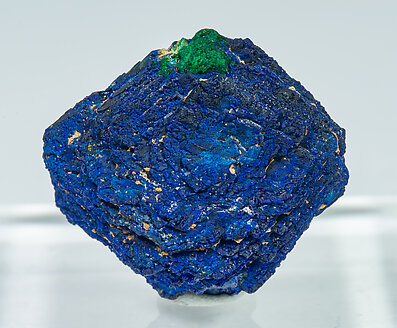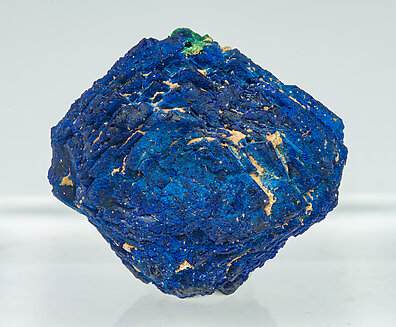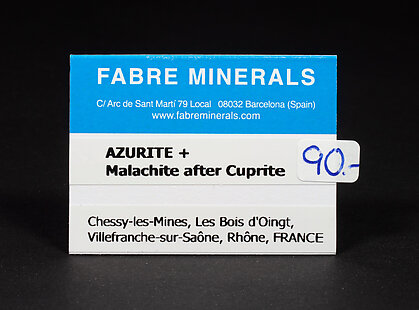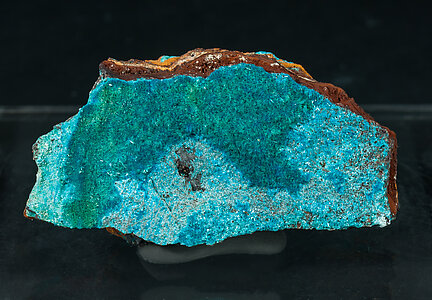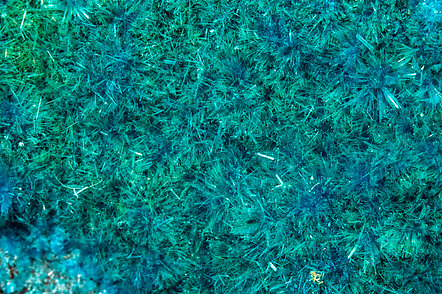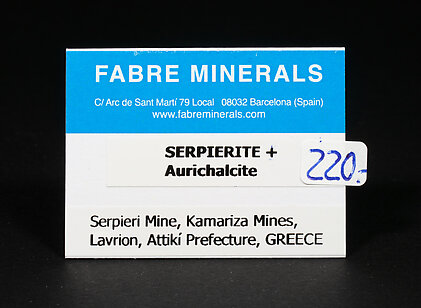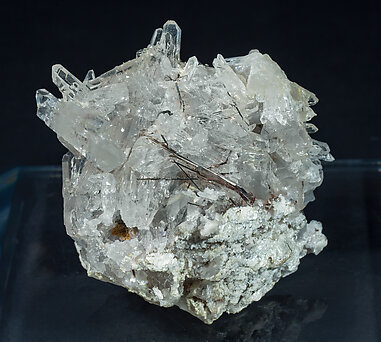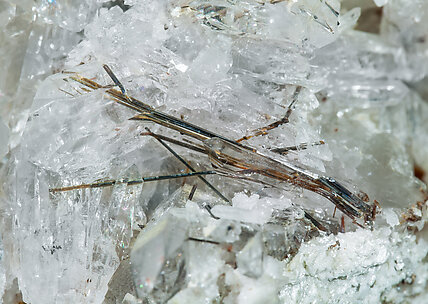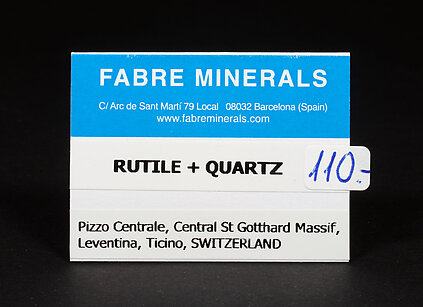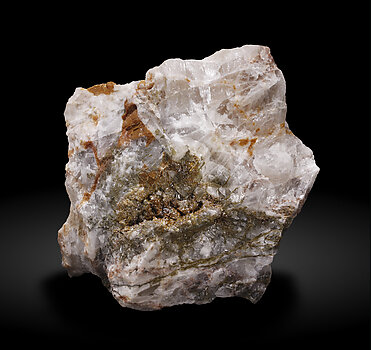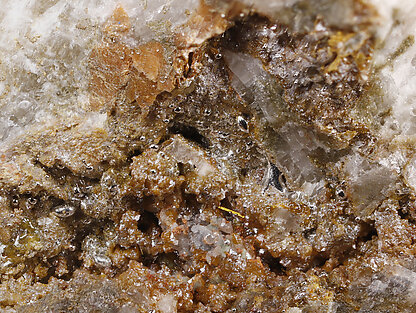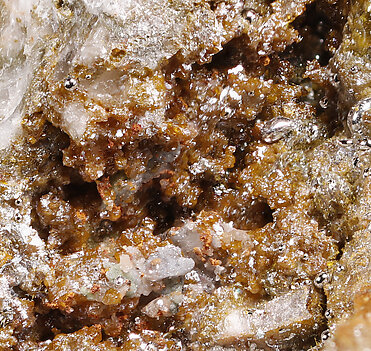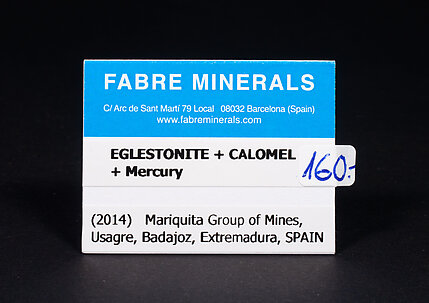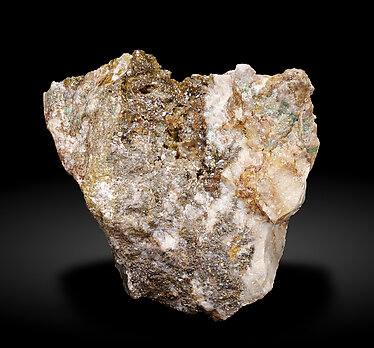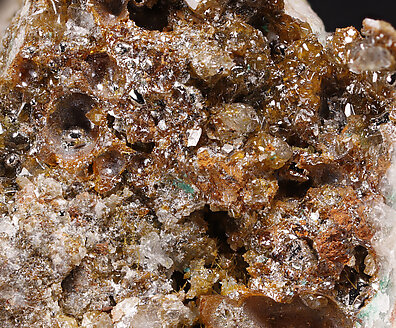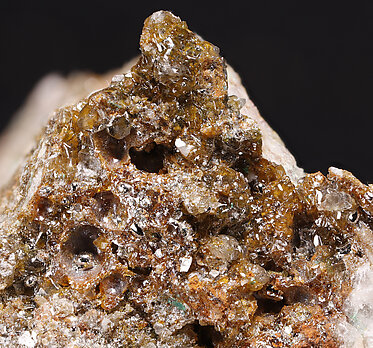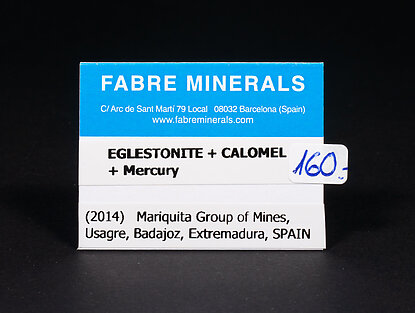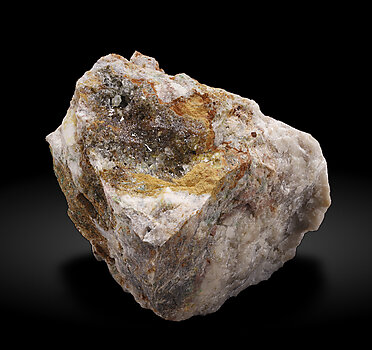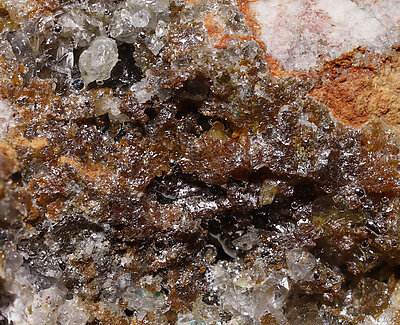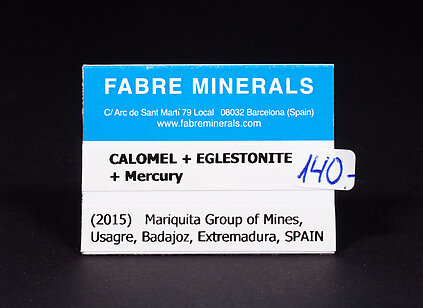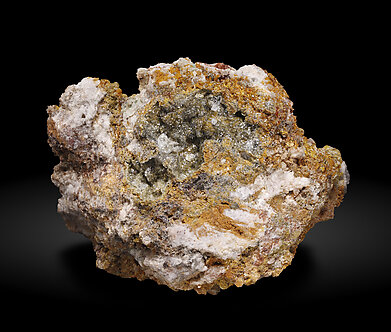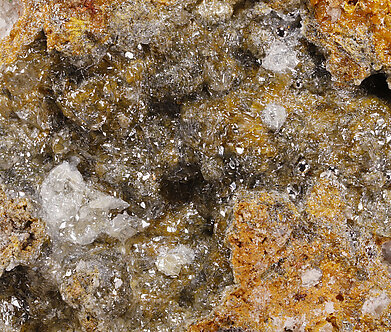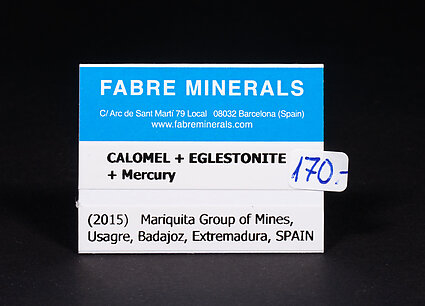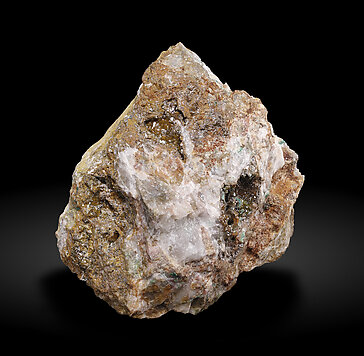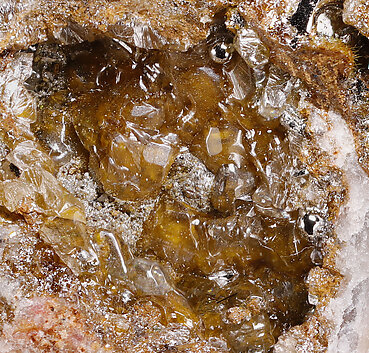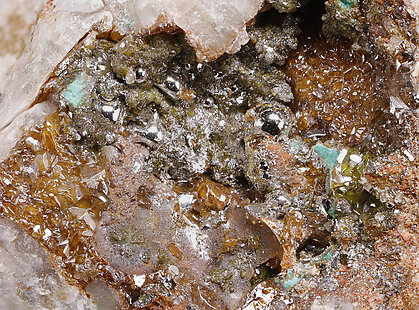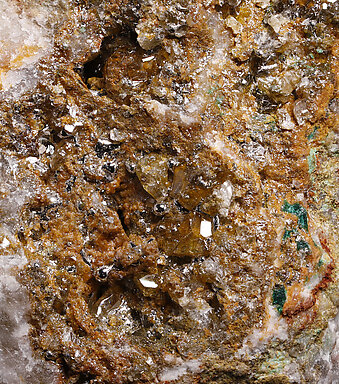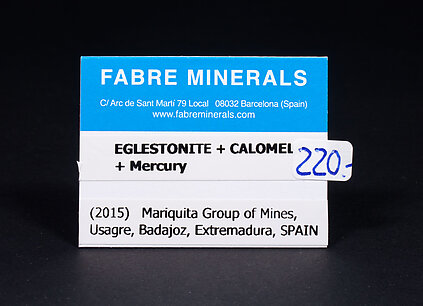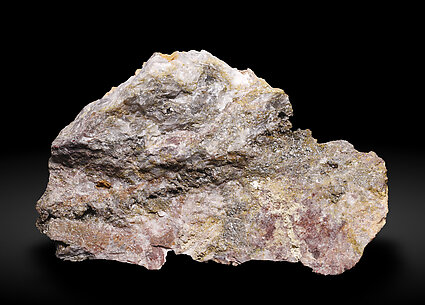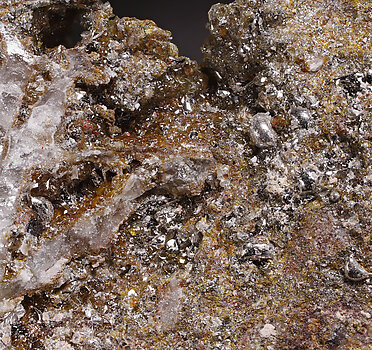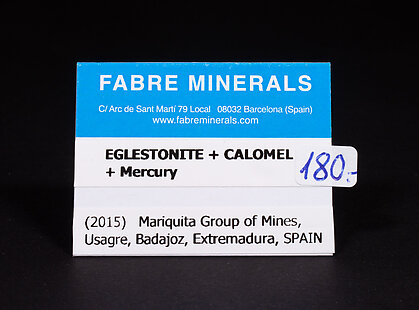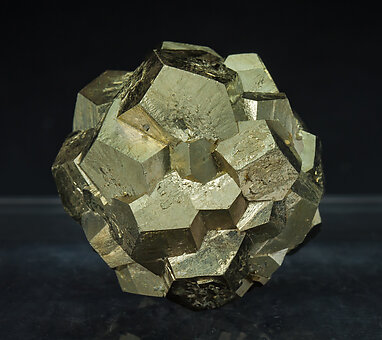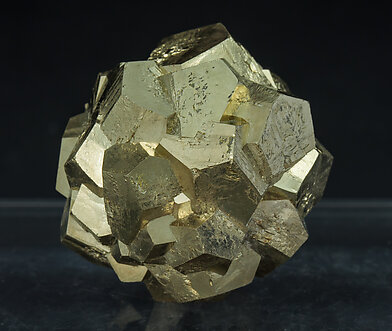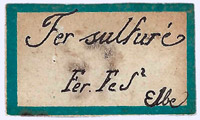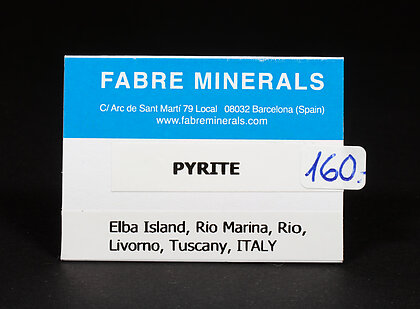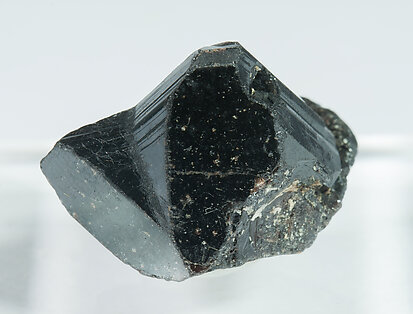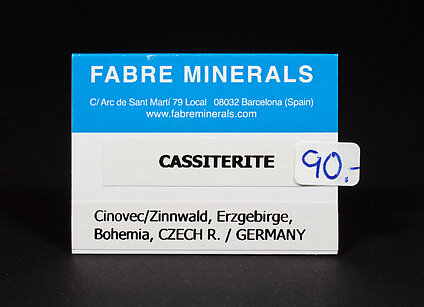| THE CORE OF EXPOMINER VIRTUAL 2022 | THE CORE OF TUCSON VIRTUAL 2022 |
Chronicle of the 2022 Tucson Show Virtual 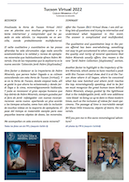 |
||
|---|---|---|---|---|
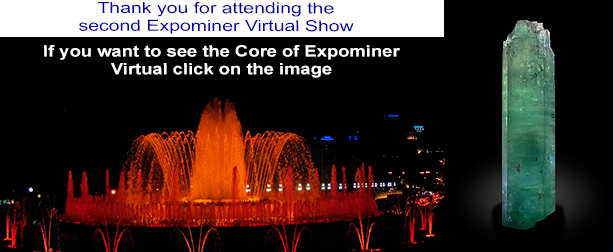 |
|
|||
|
Chronicle of the 2021 Ste. Marie Virtual Show 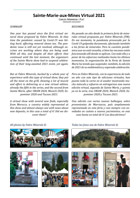
|
THE CORE OF STE. MARIE VIRTUAL 2021 | THE CORE OF TUCSON VIRTUAL 2021 |
Chronicle of the 2021 Tucson Show Virtual 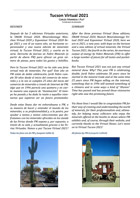
|
|
|
|
EXPO MINERAL
The Core of Expo Mineral Show (2)
(para ver esta página en español)
Thank you for attending the Expo Mineral Show
Fluorescent light (daylight)
SV2280TBF
Aesthetic specimen that combines several mineral species, the main one being a multitude of Rhodochrosite crystals -from the type locality for the species- lustrous and uniformly pink in color, exhibiting distinct morphologies in globular aggregates, stalactitic, and covering Baryte crystals. The Rhodochrosite crystals are adorned with sprinkled Chalcopyrite crystals, small but very sharp, and iridescent with a predominance of gold and greenish tones, associated with twinned crystals of lustrous black Sphalerite providing a good color contrast and, finally, Quartz crystals give the final touch to the specimen. From a classic mining district of eastern Europe.
The specimen comes to us via the collection of Ilia Deleff, a collector of Bulgarian origin and resident in France, who actively contributed to the exhibition of giant crystals that was held in the Museum of Natural History in Paris.
Cavnic mining area, Cavnic, Maramures Romania
Specimen size: 10.6 x 5.8 x 3.6 cm
Type locality
Former collection of Ilia Deleff
Fluorescent light (daylight)
SV290TRB
Disseminations of massive Calomel -a rare mercury chloride- with adamantine luster, on matrix, coinciding with the cavities and areas that present a greater degree of oxidation in the specimen, whose locality of origin is the type locality for Moschellandsbergite.
Comes from the old collection of Robert-Auguste Touchon, has been analyzed and we will send those analysis results to the buyer.
Landsberg (Moschellandsberg), Alsenz-Obermoschel, Palatinate/Pfalz, Rhineland-Palatinate/Rheinland-Pfalz Germany
Specimen size: 3.8 x 2.5 x 2.6 cm
Main crystal size: 0.1 x 0.1 cm
Former collection of Robert-Auguste Touchon
With analysis copy
Fluorescent light (daylight)
SV2340TXG
Three interpenetrating Almandine crystals, very rich in well-defined, beveled faces and edges, of a very dark brown color with slightly ocher reflections, more marked on the edges. With the particularity that this piece has not been reinforced, but rather is naturally stable, something unusual for this type of alpine specimen from the Gaisberg valley in the Austrian Tyrol.
Gaisberg Valley, Obergurgl, Gurgler Valley, Ötz Valley, North Tyrol, Tyrol/Tirol Austria
Specimen size: 7.8 x 4.2 x 4.1 cm
Main crystal size: 3.7 x 3.6 cm
Fluorescent light (daylight)
SV290EFX
Multitude of oriented Cerussite crystals preferentially covering the crests of a limestone matrix completely carpeted by these very dark and lustrous crystals, probably colored by Galena inclusions.
The specimen comes from the collection of Michel Perraudin.
Tanne, Oberharz am Brocken, Harz, Saxony-Anhalt/Sachsen-Anhalt Germany
Specimen size: 6.3 x 3.9 x 2.4 cm
Former collection of Michel Perraudin
Fluorescent light (daylight)
SV2150TBY
Aesthetic specimen formed by sharp lenticular crystals of zoned brown Siderite, randomly arranged on a rock matrix totally carpeted by snow-white Quartz crystals offering a nice contrast of colors. Several brightly colored Chalcopyrite crystals, golden and very shiny, adorn the piece.
The specimen comes from the former collection of Robert-Auguste Touchon and, most surprisingly, was found in the area of some coal mines, west of La Mure, which were closed in 1997.
Le Villaret pit, Susville, Matheysine-Trièves, Grenoble, Isère, Auvergne-Rhône-Alpes France
Specimen size: 11.7 x 4.9 x 4.8 cm
Main crystal size: 1.4 x 1 cm
Former collection of Robert-Auguste Touchon
Fluorescent light (daylight)
SV2160TGM
Group of very sharp lenticular crystals of Siderite with different shades of brown, some of them very aerial and more developed. On the back of the piece a delicate group of very fine tabular Calcite crystals with a pale cream color adorns the piece.
It is amazing that the specimen came from an area of coal mines, at La Mure.
La Mure coal mines, La Mure, Matheysine-Trièves, Grenoble, Isère, Auvergne-Rhône-Alpes France
Specimen size: 6.6 x 3.6 x 4.5 cm
Main crystal size: 5.2 x 3.2 cm
Fluorescent light (daylight)
SV2120TTD
Floater group of Quartz crystals between transparent and translucent, one of them clearly dominant and very peculiar by displaying a marked twist reminiscent of a dolphin's leap.
From an alpine peak more than 2,000 meters above sea level.
Grand Châtelar, Jarrier, Saint-Jean-de-Maurienne, Savoie, Auvergne-Rhône-Alpes France
Specimen size: 6.4 x 5.6 x 4.4 cm
Main crystal size: 6.2 x 2.1 cm
Fluorescent light (daylight)
SV2240TFR
Complex Cassiterite crystal with marked “tin peak” twinning, showing polycrystalline growths on the crystal faces, with dark brown tones, embedded in a matrix of Quartz.
It comes from an already extinct deposit exploited for beryllium, molybdenum and tin, and worked since Roman times. A real oldie.
La Villeder, Le Roc-Saint-André, Vannes, Morbihan, Brittany/Bretagne France (±1900)
Specimen size: 6.2 x 3.6 x 2.7 cm
Main crystal size: 4.6 x 3.8 cm
Fluorescent light (daylight)
SV2180TJD
Complex Cassiterite crystal showing polycrystalline growths on the faces of the crystal with dark brown tones, embedded in a matrix of Quartz.
It comes from an already extinct deposit exploited for beryllium, molybdenum and tin, and worked since Roman times. A real oldie.
La Villeder, Le Roc-Saint-André, Vannes, Morbihan, Brittany/Bretagne France (±1900)
Specimen size: 5.2 x 4 x 2.5 cm
Main crystal size: 1.9 x 1.5 cm
Fluorescent light (daylight)
SV295TMX
Group of translucent and very lustrous Quartz crystals, one of them clearly dominant, arranged parallel to each other and oriented preferentially, flattened and doubly terminated, with a very marked longitudinal faden perpendicular to the crystal growth axis.
A typical specimen of alpine fissures.
La Lauzière Massif, Saint-Jean-de-Maurienne, Savoie, Auvergne-Rhône-Alpes France
Specimen size: 5.8 x 4.3 x 1.9 cm
Main crystal size: 3.1 x 2.5 cm
Fluorescent light (daylight)
SV290TTX
Floater group of Azurite crystals of flattened habit forming a rosette with marked polycrystalline growths with uniform and deep blue color, all adorned by a crown of Malachite pseudomorphic after Cuprite crystals.
From the type locality for Azurite.
Chessy-les-Mines, Les Bois d'Oingt, Villefranche-sur-Saône, Rhône, Auvergne-Rhône-Alpes France
Specimen size: 2.3 x 2 x 0.7 cm
Type locality
Fluorescent light (daylight)
SV2220TLX
Double crust formed by a covering of bluish Aurichalcite crystals completely covering a limonitic rock on which was partially deposited a large group of very fine acicular Serpierite crystals with bluish green hues.
The specimen is from the type locality for Serpierite.
Serpieri Mine, Kamariza Mines, Lavrion Mining District, Attikí (Attica) Prefecture Greece
Specimen size: 4.8 x 2.4 x 1.4 cm
Type locality
Fluorescent light (daylight)
SV2110TXA
Fine reticulated crystals of Rutile with brown reflections, encompassed in a crystalline matrix formed by Quartz crystals, some of them doubly terminated, highly translucent and lustrous.
The specimen comes from the old collection of Robert-Auguste Touchon.
Pizzo Centrale, Airolo, Central St Gotthard Massif, Leventina, Ticino (Tessin) Switzerland
Specimen size: 5.7 x 4.7 x 3.6 cm
Main crystal size: 2.2 x 0.1 cm
Former collection of Robert-Auguste Touchon
SV2160NAC
A novelty for Spanish mineralogy (see: La extraordinaria paragénesis de minerales de mercurio de Usagre)
Crystal group of Eglestonite - an alteration mineral, product of other mercury minerals -, on matrix, honey-colored and translucent. They completely fill a cavity, in addition to being dispersed in the rest of the piece, and are accompanied by Calomel crystals with an adamantine luster, and small drops of Mercury that hold together thanks to their high surface tension. Both species of mercury halides have been analyzed and we will send a copy of the analysis to the purchaser. These minerals are photosensitive, easily blackening in sunlight and even in the light of a lamp, so we recommend keeping them in the dark.
Mariquita mining group, Cerro de las Minas, Usagre, Comarca Campiña Sur, Badajoz, Extremadura Spain (2014)
Specimen size: 4.7 x 4.5 x 3.3 cm
Main crystal size: 0.1 x 0.1 cm
Very fluorescent long & short UV
With analysis copy
SV2160NAB
A novelty for Spanish mineralogy (see: La extraordinaria paragénesis de minerales de mercurio de Usagre)
Crystal group of Eglestonite -an alteration mineral, product of other mercury minerals-, on matrix, honey-colored and translucent. They completely fill a cavity, in addition to being dispersed in the rest of the piece, and are accompanied by Calomel crystals with an adamantine luster and small drops of Mercury that hold together thanks to their high surface tension. Both species of mercury halides have been analyzed and we will send a copy of the analysis to the purchaser. These minerals are photosensitive, easily blackening in sunlight and even in the light of a lamp, so we recommend keeping them out of the light.
Mariquita mining group, Cerro de las Minas, Usagre, Comarca Campiña Sur, Badajoz, Extremadura Spain (2014)
Specimen size: 4.8 x 4.3 x 2.8 cm
Main crystal size: 0.1 x 0.1 cm
Very fluorescent long & short UV
With analysis copy
SV2140NAA
A novelty for Spanish mineralogy (see: La extraordinaria paragénesis de minerales de mercurio de Usagre)
Crystals of Calomel with an adamantine luster, on matrix, one of them clearly dominant and easily visible, deposited in a cavity full of translucent honey-colored Eglestonite crystals, a mineral, product of the alteration of other mercury minerals, an element that is also present on the specimen as drops that are held thanks to its high surface tension.
Both species of mercury halides have been analyzed and we will send copy of the analysis to the buyer. These minerals are photosensitive, blackening easily when exposed to sunlight and even under the light of a lamp, so we recommend keeping them out of the reach of light.
Mariquita mining group, Cerro de las Minas, Usagre, Comarca Campiña Sur, Badajoz, Extremadura Spain (2015)
Specimen size: 4.9 x 4 x 3.9 cm
Main crystal size: 0.2 x 0.2 cm
Very fluorescent long & short UV
With analysis copy
SV2170NAD
A novelty for Spanish mineralogy (see: La extraordinaria paragénesis de minerales de mercurio de Usagre)
Crystals of Calomel with an adamantine luster, one of them clearly dominant and easily visible, deposited in a cavity full of translucent honey-colored Eglestonite crystals, a mineral, product of alteration of other mercury minerals, an element that is also present in the specimen as drops of native Mercury that hold together thanks to their high surface tension. Both of the mercury halide species have been analyzed and we will send a copy of the analysis to the buyer. These minerals are photosensitive, blackening easily when exposed to sunlight and even under the light of a lamp, so we recommend keeping them out of the reach of light.
Mariquita mining group, Cerro de las Minas, Usagre, Comarca Campiña Sur, Badajoz, Extremadura Spain (2015)
Specimen size: 4.9 x 4.2 x 2.8 cm
Main crystal size: 0.2 x 0.2 cm
Very fluorescent long & short UV
With analysis copy
SV2220NAE
A novelty for Spanish mineralogy (see: La extraordinaria paragénesis de minerales de mercurio de Usagre)
A crystal group of Eglestonite -an alteration mineral, product of other mercury minerals-, on matrix, honey-colored, transparent and translucent, completely filling a cavity, in addition to being scattered throughout the rest of the piece. Accompanied by Calomel crystals with adamantine luster, and small drops of Mercury that hold together thanks to their high surface tension. Both of the halide species that are associated the Mercury have been analyzed and we will send a copy of the analysis to the buyer. A additional curiosity on this piece are small blue-green Rosasite formations. These mercury minerals are photosensitive, easily blackening in sunlight and even in the light of a lamp, so we recommend keeping them out of the reach of light.
Mariquita mining group, Cerro de las Minas, Usagre, Comarca Campiña Sur, Badajoz, Extremadura Spain (2015)
Specimen size: 4.9 x 4.6 x 3.4 cm
Main crystal size: 0.1 x 0.1 cm
Very fluorescent long & short UV
With analysis copy
SV2180NFB
A novelty for Spanish mineralogy (see: La extraordinaria paragénesis de minerales de mercurio de Usagre)
A group of Eglestonite crystals -an alteration mineral, product of other mercury minerals-, on matrix, honey-colored and translucent. They completely fill a cavity, in addition to being dispersed in the rest of the piece, and are accompanied by Calomel crystals with an adamantine luster, small drops of Mercury that hold together thanks to their high surface tension and Cinnabar. Both species of mercury halides have been analyzed and we will send a copy of the analysis to the buyer. These minerals are photosensitive, easily blackening in sunlight and even in the light of a lamp, so we recommend keeping them out of the light.
Mariquita mining group, Cerro de las Minas, Usagre, Comarca Campiña Sur, Badajoz, Extremadura Spain (2015)
Specimen size: 10 x 6.4 x 2.4 cm
Main crystal size: 0.1 x 0.1 cm
Very fluorescent long & short UV
With analysis copy
Fluorescent light (daylight)
SV2160TAX
Another beautiful Pyrite from Ambasaguas? Pretty, yes, but not from Ambasaguas. Floater group of interpenetrated pentadodecahedral crystals, with faces and edges perfectly defined and with the typical golden and brilliant color.
The locality of origin is the island of Elba in Italy, a fact that goes unnoticed at first sight and that makes this piece special, with a different morphology than usual for the deposit. An old label goes with it.
Elba Island, Livorno Province, Tuscany Italy
Specimen size: 3 x 3 x 3 cm
Main crystal size: 1.5 x 1.5 cm
Fluorescent light (daylight)
SV290TRM
Floater crystal of Cassiterite with a very distinct “tin peak” twin, with well defined and lustrous faces and edges, some of them with grooves and truncations at the vertices.
The specimen comes from a historic mining district that covered the border area between Saxony, in Germany, and Bohemia, in the current Czech Republic, exploited for tin and tungsten since the end of the Middle Ages.
Zinnwald/Cinovec, Krusné Hory Mountains, Erzgebirgskreis, Saxony/Sachsen Germany
Specimen size: 2.5 x 1.8 x 1.4 cm
| Home page Minerals | About Fabre Minerals | Comments | Friends of Minerals Forum | Feedback Form | Search |
| All pictures, text, design © Fabre Minerals 1996-2024 — On the web since 1996 |
